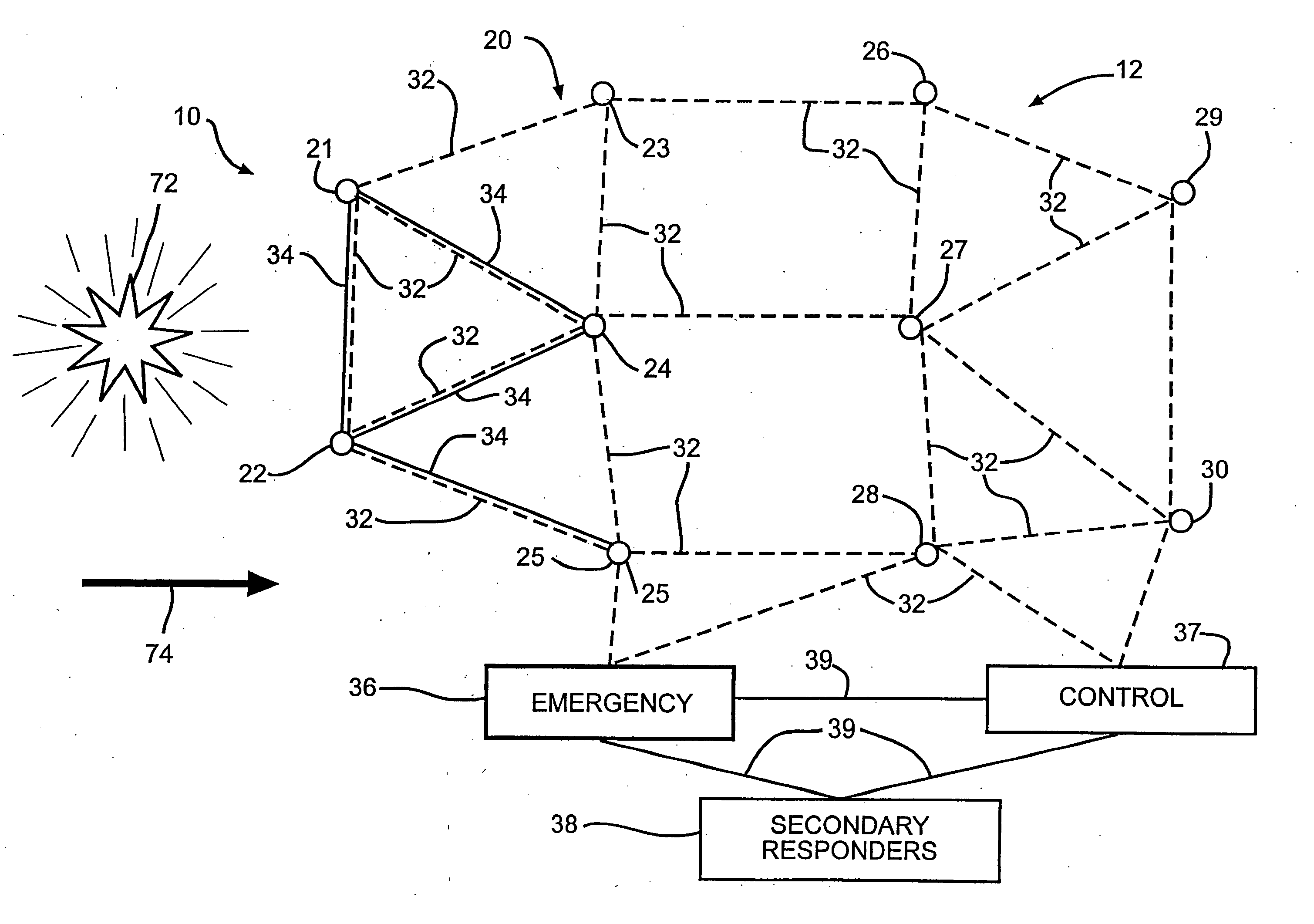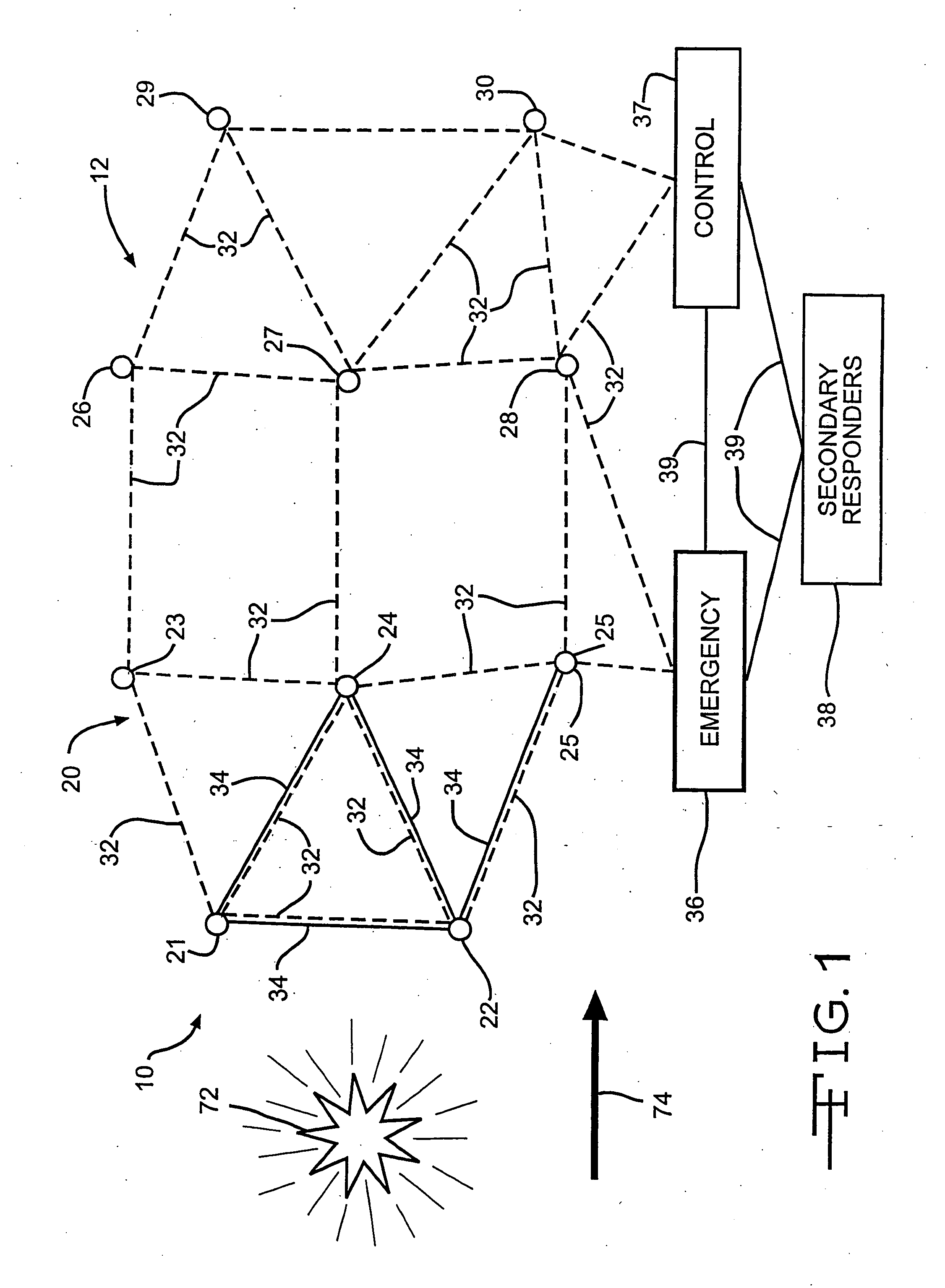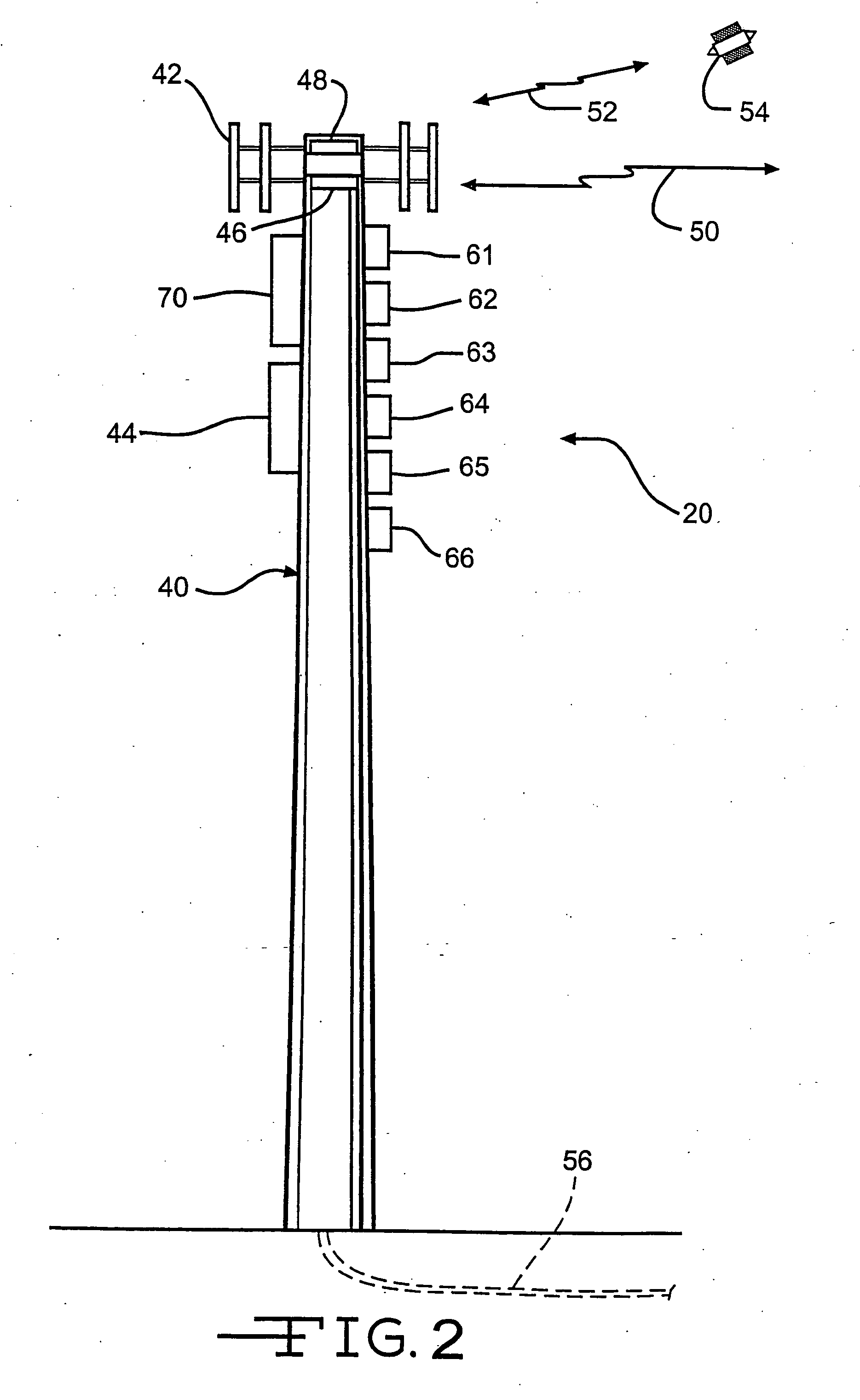System for detection of hazardous events
a technology for hazardous events and detection systems, applied in the field of systems, can solve problems such as partial effectiveness, and achieve the effects of reducing the capability of memory storage, reducing the capability of a processor, and losing the controller capability
- Summary
- Abstract
- Description
- Claims
- Application Information
AI Technical Summary
Benefits of technology
Problems solved by technology
Method used
Image
Examples
example
[0058] An integrated hazard detection and assessment system underwent field testing at cellular communication towers in Tennessee. The field test included a Block II chemical / biological mass spectrometer (CBMS) for detection of airborne chemical agents in the mail room of the City-Center building in Knoxville, Tenn., a direct sampling ion trap mass spectrometer for detection of chemical agents in air and compounds in water in Chattanooga, Tenn., and a Block II CBMS for detection of airborne chemical and biological agents in Nashville, Tenn.
[0059] All sensors were networked over an existing conventional phone line system to a Central Command Center at the State of Tennessee Office of Homeland Security in Nashville, Tenn. Detection information and local meteorological data were input to the U.S. military hazard prediction and assessment capability (HPAC) for plume prediction. The results of the field test performed are summarized in the table below:
TABLE 1Detection of Airborne and ...
PUM
| Property | Measurement | Unit |
|---|---|---|
| threshold | aaaaa | aaaaa |
| threshold level | aaaaa | aaaaa |
| frequency | aaaaa | aaaaa |
Abstract
Description
Claims
Application Information
 Login to View More
Login to View More - R&D
- Intellectual Property
- Life Sciences
- Materials
- Tech Scout
- Unparalleled Data Quality
- Higher Quality Content
- 60% Fewer Hallucinations
Browse by: Latest US Patents, China's latest patents, Technical Efficacy Thesaurus, Application Domain, Technology Topic, Popular Technical Reports.
© 2025 PatSnap. All rights reserved.Legal|Privacy policy|Modern Slavery Act Transparency Statement|Sitemap|About US| Contact US: help@patsnap.com



